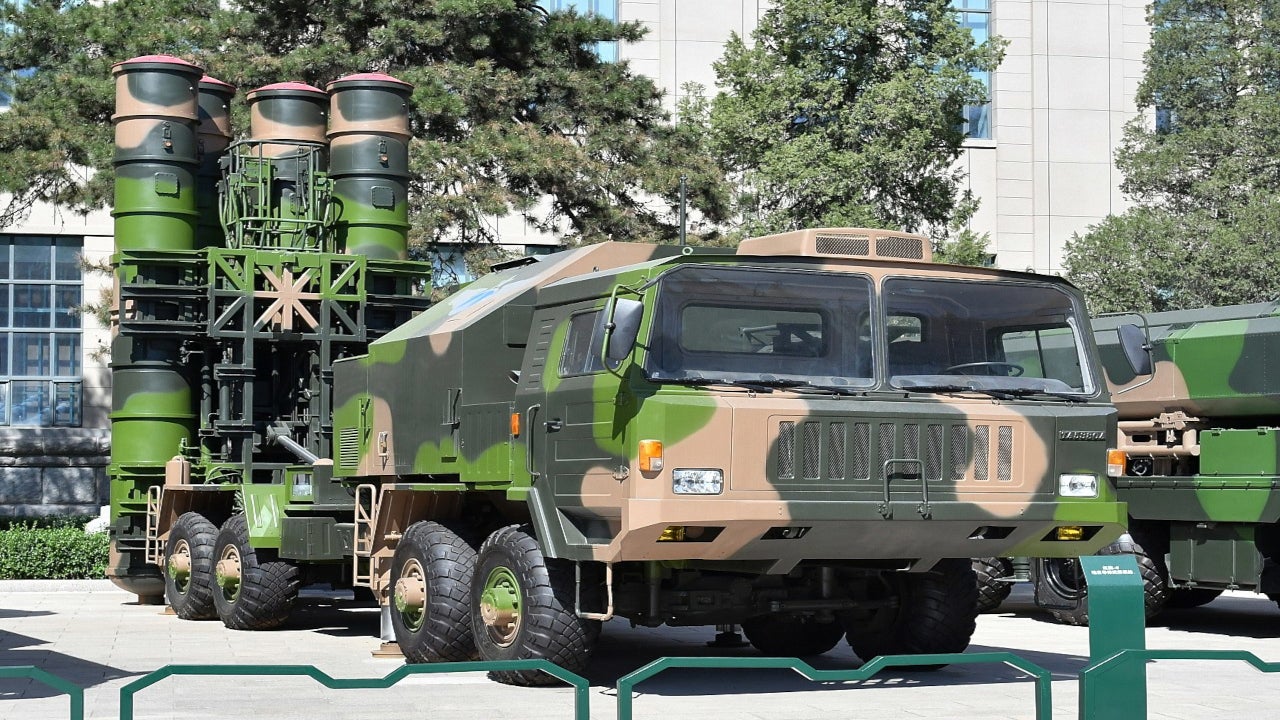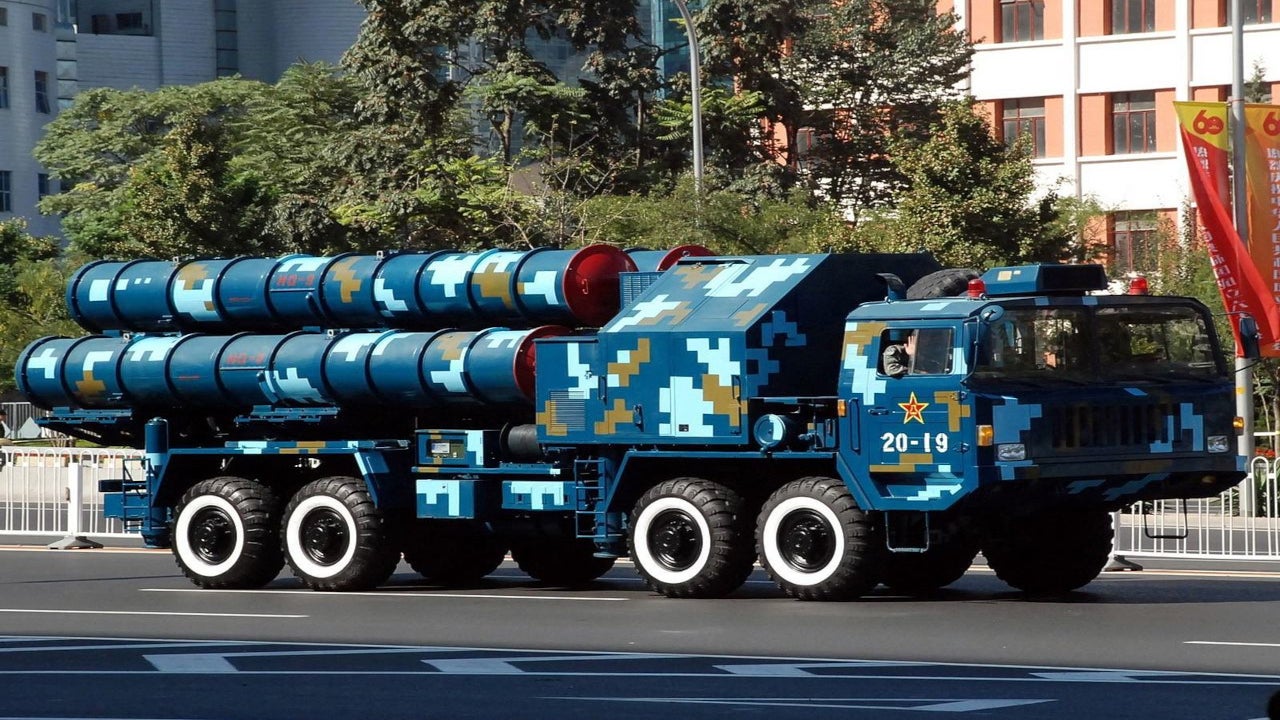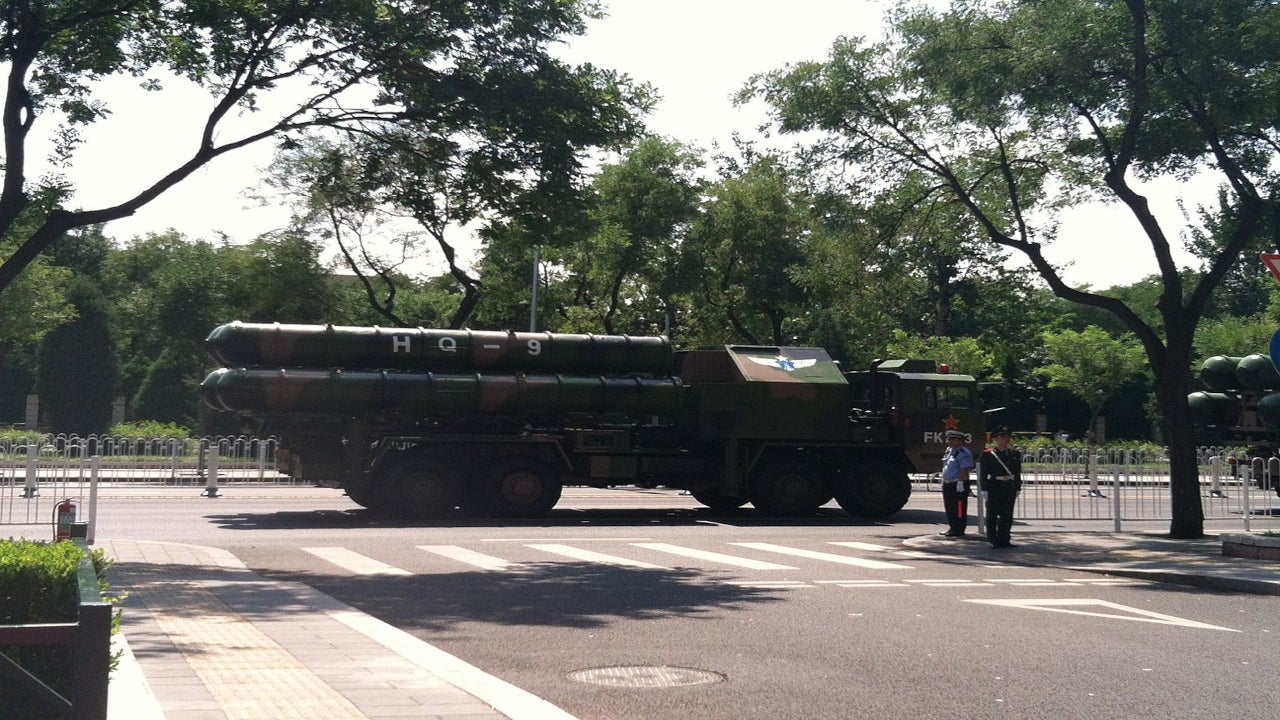Hong Qi 9 (HQ-9) is a long-range air defence missile system developed by China Precision Machinery Import & Export Corporation (CPMIEC), a defence company based in Beijing, China.
The HQ-9 can intercept various threats such as air-to-ground missiles, helicopters, aircraft, unmanned aerial vehicles (UAVs), guided bombs, and tactical ballistic missiles. The missile system achieved initial operational capacity in 1997 and is believed to be based on the Russian S-300PMU missiles, and the American Patriot air defence systems.
HQ-9 has been upgraded into several variants with improved technology and maximum range varying from 100km to 300km.
Besides being operational in China, the HQ-9 and its variants are exported to countries such as Algeria, Pakistan, Iran, Iraq, Turkmenistan, and Uzbekistan.
HQ-9 design and features
HQ-9 is an advanced two-stage air defence missile with an advanced guidance system and multi-target anti-jamming capabilities. The first stage has a diameter of 700mm, while the diameter of the second stage is 560mm. The 6.8m-long missile, weighing approximately 2,000kg, can fly at a maximum speed of Mach 4.2.
The missile can carry a 180kg high explosive fragmentation (HE-FRAG) type warhead up to a maximum range of 200km and an altitude of 30km. The warhead is equipped with a proximity fuse with a 35m effective range, which gets activated when the missile is 5km away from its target. The exposed thrust vector control (TVC) of the missile makes it visibly different from the S-300V missiles.
Radar
The battery includes Type 120 low-altitude acquisition radar, Type 305A 3D acquisition radar, H-200 mobile engagement radar, and Type 305B 3D acquisition radar.
The HT-233 radar operates in the 300MHz bandwidth with a target detection range of 120km and a tracking range of 90km.
It can scan 360° in azimuth at an elevation range from 0° to 65°. The radar is designed to track 100 airborne targets and simultaneously engage more than 50 of them at a distance of approximately 100km.
Guidance system
The track-via-missile (TVM) guidance system of HQ-9 employs a combination of inertial guidance, mid-course uplink, and active radar terminal guidance systems. Some of the missile variants have an optional semi-active radar homing capability with radio command guidance.
HQ-9 launch vehicle
The HQ-9 transporter erector launcher (TEL) holds four missiles in separate compartments, which are mounted on Taian TA5380 8×8 high mobility tactical truck chassis. In firing position, the compartments at the rear side of the truck raise to a vertical position, while two stabilisers are placed at the rear and centre of the chassis.
The composition of a HQ-9 battery includes six TEL trucks linked to an HT-233 3D C-band mono-pulse planar phased array engagement radar, controlled by a TWS-312 battery command post.
A typical People’s Liberation Army (PLA) HQ-9 battery includes 48 missile-launch vehicles comprising 192 missiles, a command vehicle, six targeting radar vehicles, six control vehicles, six search-radar vehicles. Other elements in the battery include communications, positioning, power supply, and support vehicles.
Details of HQ-9 variants
FD-2000, HQ-9A, HQ-9B, HQ-9C, and HHQ-9 are some of the versions of the Hong Qi 9 missile. The HQ-9A variant was first tested in 1999 and entered service in 2001. It features advanced electronic equipment and software for increased accuracy and probability of kill.
FD-2000, which is an export version with anti-stealth capability, was unveiled at the Africa Aerospace and Defence Exhibition held in Cape Town, South Africa, in March 2009. The HQ-9A also has an anti-radiation version, known as FT-2000, for export.
The HQ-9B with a longer range and extra seeker achieved initial operational capacity in 2014. It is a new vertical launch, ground-to-air missile defence system with a target range of more than 250km and up to an altitude of 50km. China deployed the HQ-9B ground-to-air missile defence system to the artificial islands in the disputed South China Sea in 2016.
The People’s Liberation Army Air Force tested the upgraded HQ-9B in extreme conditions in unfamiliar terrain in May 2021.
HHQ-9A and HHQ-9B are the naval variants of HQ-9A and HQ-9B, respectively. HQ-9C, which is currently under development, will be equipped with fully active radar homing.






